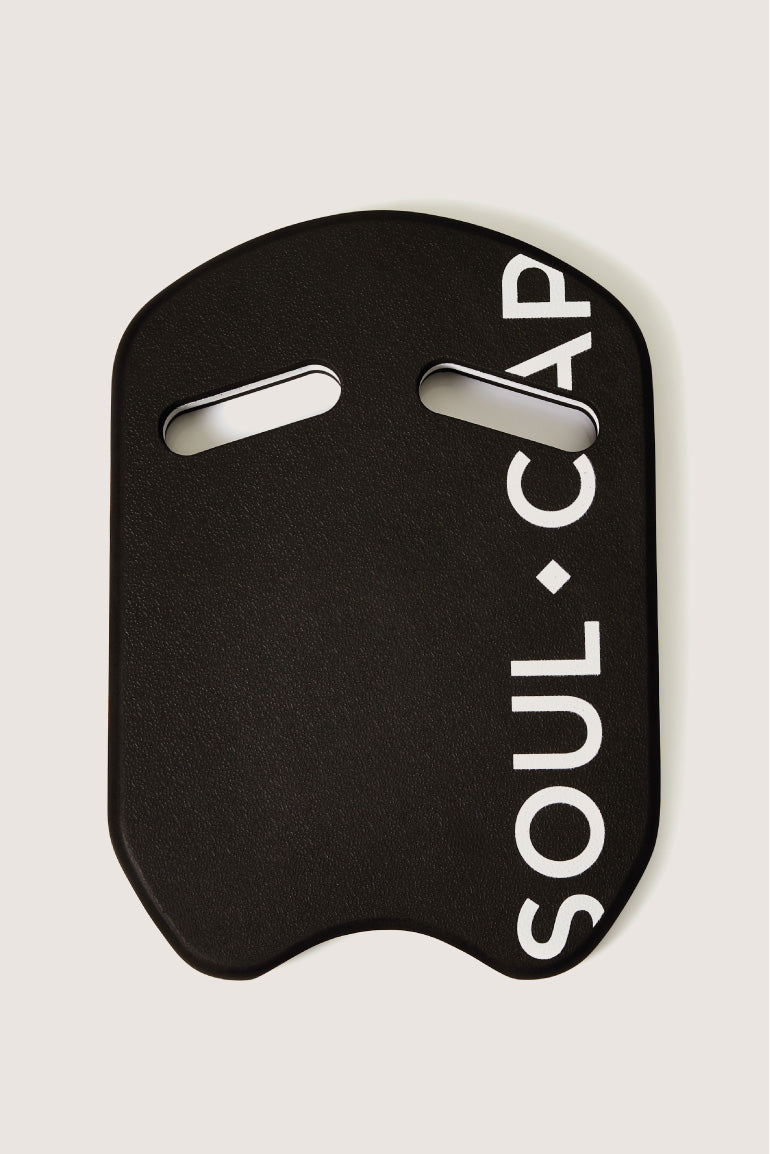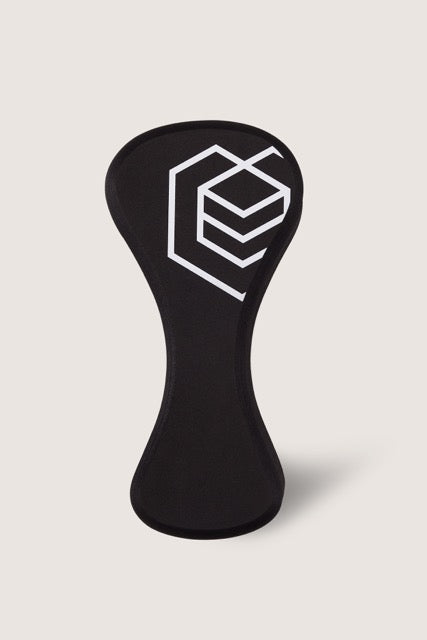Swimming is a full-body workout – and that makes it one of the best sports for developing strength all over your body.
But that also makes it one of the hardest sports to master. With so much going on at once – your posture, your breathing, your arm technique, and the motion of your legs – it’s not always easy to focus on one thing.
So what do swimmers do when they need to work on one thing at a time?
They use a training aid to isolate part of their body - and a swimming kickboard does exactly that.
How does a swimming kickboard work?
A kickboard supports your arms and upper body, letting them rest so you can devote your focus and energy to training your leg technique. When you’re swimming normally, the motion of your arms helps to keep your upper body afloat. The combined work of your arms and legs keeps your entire body straight, streamlined, and high in the water.
If you tried to swim using only your legs – without a kickboard – your upper body would sink in the water, creating extra drag that would slow you down.
So in effect, a kickboard replaces the buoyancy of your arm strokes. It balances out the motion of your legs, and lets you keep on swimming while you focus on your kicking technique.
Why do swimmers use kickboards?
If you’re still learning how to swim, a kickboard is a great tool to help you practise your leg work before you get into a full-body swim. It means you can focus on one thing at a time, until you’re comfortable enough to use both your arms and your legs.
But kickboards aren’t just for beginners – they’re an everyday training aid used by advanced and competitive swimmers, too.
With a kickboard, you’ll be able to:
- Strengthen your legs and your core – making your legs work twice as hard to move the same body weight
- Perfect your kick technique – giving full focus to your legs, without worrying about what your arms are doing
- Focus on your breathing and your posture – with one part of your body isolated, you can concentrate more easily on the other parts of your technique
- And keep training for a longer time – if your upper body is usually the first thing to get tired, you can switch to a kickboard to give your upper body a rest, and keep swimming without having to stop.
How to use a kickboard properly
On the face of it, a swimming kickboard is a simple training aid. It’s there to support your upper body while you work on training your legs.
But there are a few details that aren’t so obvious. Here’s what you need to keep in mind:
Hold the kickboard near the top
Kickboards work because they’re buoyant – they push upwards against the water to help you stay more afloat.
When you hold the kickboard near the top, you’re resting your arms across the top of the whole kickboard. And that means your arms are getting more of that upward force to support them, and your body will naturally become more straight in the water as you kick.
(If you grip the kickboard at its lower edge, you’re only getting support at your fingertips – and that won’t do much to help your body stay afloat!)
If you’re using a kickboard to practise your backstroke kicking, you can hug the kickboard close to your chest with your arms crossed over the top of it. The buoyancy of the kickboard will pull your upper body higher in the water, and help to keep you streamlined as you swim.
Press down on the kickboard to raise your hips
If you’re practicing your freestyle kick, you’re only being supported at either end. Your kicks are keeping your legs up, and the board is keeping your arms up.
This can mean that your body sags in the middle (making a V-shape in the water). When your hips sink, you’re no longer streamlined – and this extra drag can make it harder to move forwards.
So to help balance things out and keep your body straight and streamlined, you can push down slightly on the kickboard with your arms. This will naturally help to raise up your hips and avoid any sag.
But don’t push down too hard! You need to apply just enough pressure to keep your body straight –you don’t want to start lifting your hips out of the water.
Keep your body straight (but not too straight)
A straight posture is great for a streamlined swim. But there is such a thing as ‘too straight’ – and it could put unnecessary strain on your shoulders and neck.
If you’re using a kickboard with fully extended arms – where your elbows are locked – this can become uncomfortable over time. So to help you stay relaxed and avoid any strain, try to leave your arms slightly bent at the elbow.
Our own SOUL CAP Kickboard comes with cut-away handles for exactly this purpose. By holding on to the angled holes near the top of the kickboard, your arms will naturally rest at a slight bend, and you’ll be less likely to over-extend them.
Ready to train for stronger legs and core?
Kickboards may be simple – but they’re an essential part of the toolkit for any swimmer who’s serious about their training.
So if you’re looking to improve your technique, strengthen your legs (or get the support you need as you learn the basics), check out our new SOUL CAP Kickboard in our online shop – or take a look at our new SOUL CAP Pullbuoy to help you train your upper body and arms.




